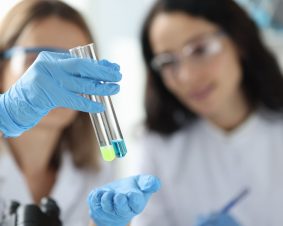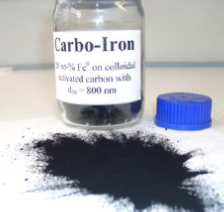 >
Spotlight July 2022: New definition on nanomaterials published
>
Spotlight July 2022: New definition on nanomaterials published
The European Union has published a new definition for nanomaterials as of June 2022. It is recommended that this be used as a basis for future legislation. The new documents can be found on the EC website.
In the new “nanodefinition”, the essential components such as the origin or the size range of the particles (1-100 nm) remain mostly unchanged, but some aspects are simplified that were only included in the old definition from 2011 through explicit extensions. For example, nanomaterials with dimensions below one nanometre, such as some nanotubes and graphene, which were previously explicitly included, are now included generically. For this purpose, elongated particles with two external dimensions smaller than 1 nm and one dimension larger than 100 nm as well as platelet-like particles with one dimension smaller than 1 nm and two dimensions larger than 100 nm are newly taken into account. Particles with two orthogonal external dimensions larger than 100 µm no longer have to be taken into account.
Likewise, some decision criteria have been clarified and simplified. The previous criterion that a material with a volume specific surface area (VSSA) of 60 m2/cm3 or more was classified as nano has now been dropped. Conversely, in future a material can be designated as non-nano if the VSSA is smaller than 6 m2/cm3. Finally, the threshold for the particle number-based size distribution in the new definition is no longer flexible, but fixed at 50 %.

Weitere Spotlights
Spotlight May 2022: Nano-ghosts” – Risk assessment of submicron-sized particles in food biased towards fictional “nano”
The European Commission has issued a ban on the colorant titanium dioxide in food. Titanium dioxide, which provides a nice shine and bright white color, can potentially damage genetic material. We chose a review article from 2022 for the May 2022 Spotlight that addresses the risk assessment of food-grade titanium dioxide (E171) and the resulting […]
Read moreSpotlight September 2023: Fishing for raw materials with proteins
The so-called rare earth elements such as neodymium, dysprosium or cerium are elements that are of great importance for the energy transition; among others they serve as components of magnets in generators for electric power generation, act as luminescent materials in energy-saving lamps or as part of the car exhaust catalytic converter. The global production […]
Read moreSpotlight September 2020: Groundwater remediation with Carbo-Iron® – Risk or Benefit?
In September we would like to present a paper of the BMBF project Fe-Nanosit. The project dealt with the use of iron-containing nanomaterials in groundwater and wastewater remediation. A comprehensive assessment and weighing of benefits and possible environmental risks resulting from the application is now presented by the project partners in this paper. Groundwater is indispensable for the […]
Read moreSpotlight August 2021: Towards FAIR nanosafety data
In August we would like to present a paper on FAIR data. The paper published in Nature Nanotechnology in June 2021 summarises the challenges and provides recommendations for the efficient reuse of nanosafety data in line with the recently established FAIR guiding principles: findable, accessible, interoperable and reusable. This article summarises the know-how on the […]
Read more


